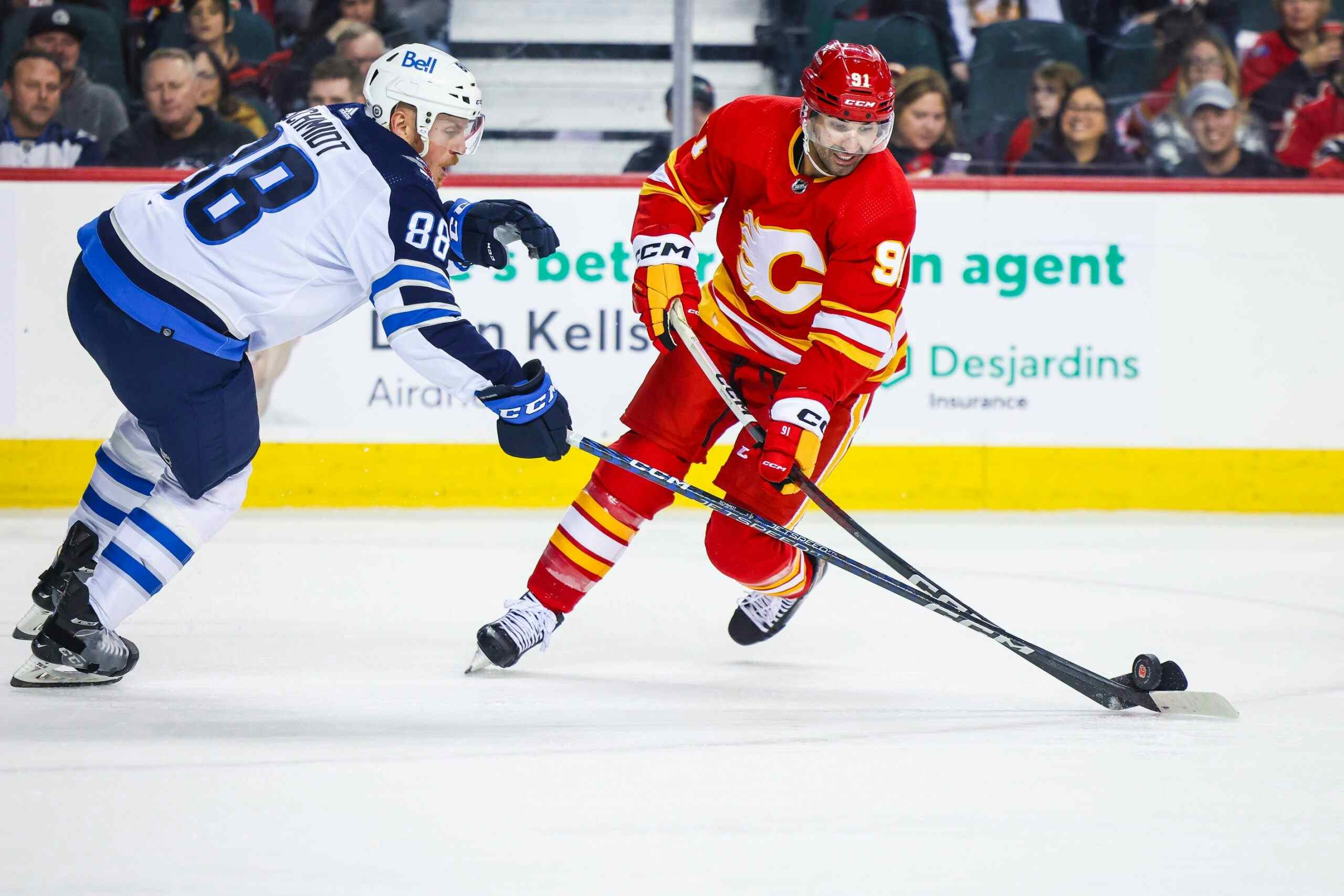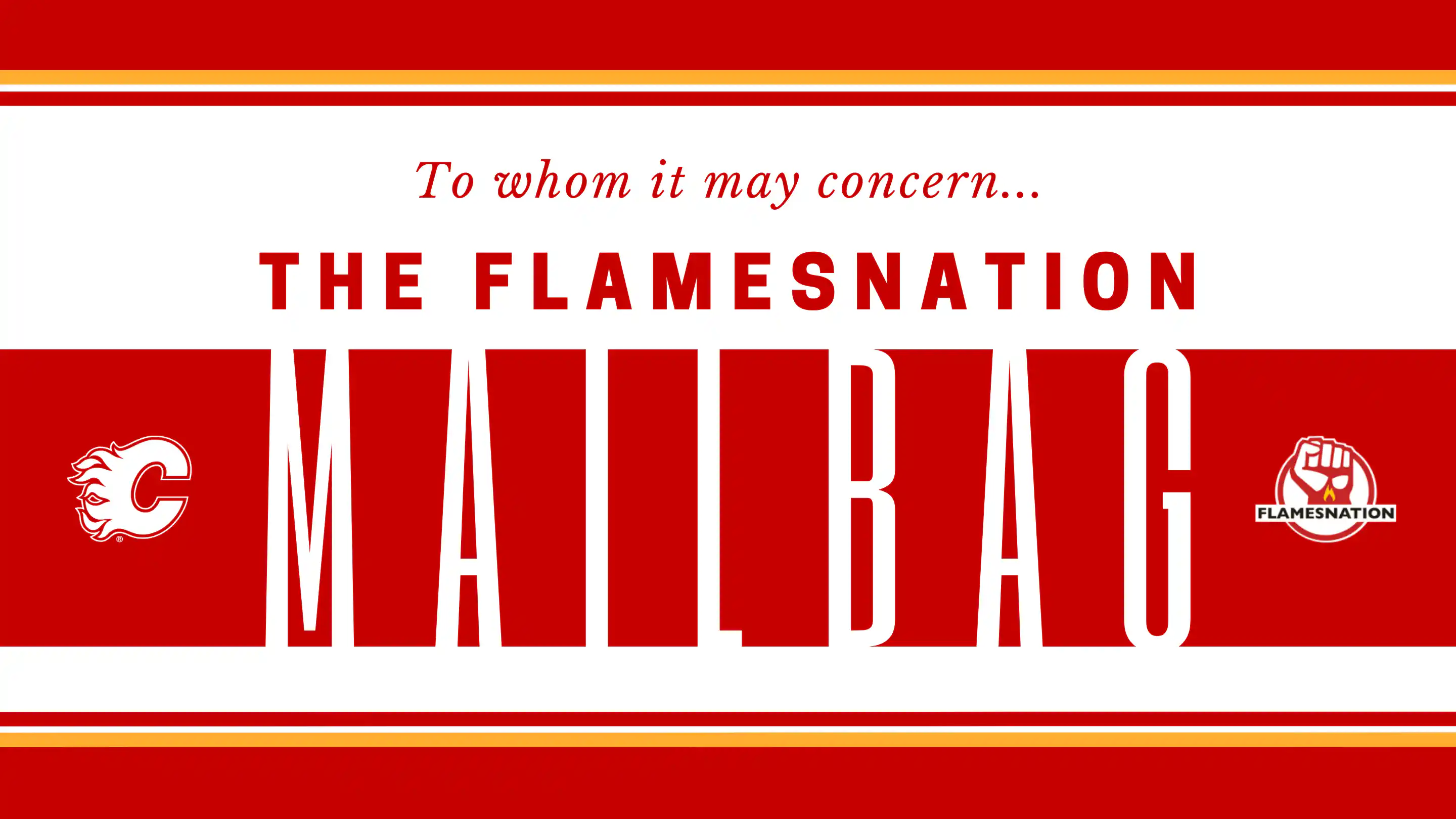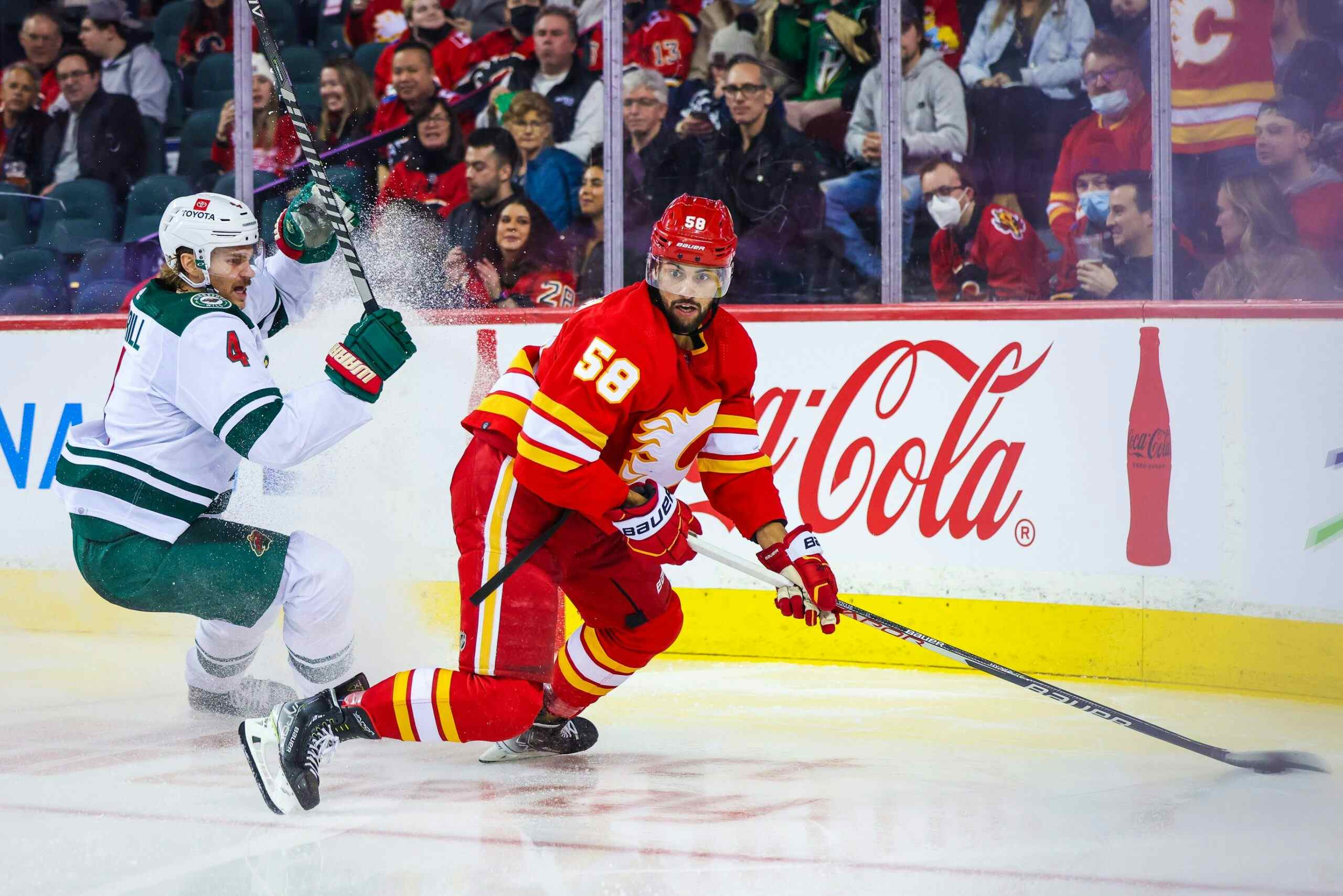Sharks 2, Flames 1 (OT) post-game embers: Now that’s how you lose
By Ari Yanover
8 years ago
Photo credit: Sergei Belski/USA TODAY Sports
Well, almost completely lose. The Flames got a point out of the whole affair, and while the thrill of finally solving a goalie who nearly had a 50-save night and tying a game in the final two minutes can’t be unmatched… gaining that one point only to lose the other 19 seconds into overtime is a whole other level of crushing.
But if you’re gonna go down, go down swinging. Go down being the significantly better team. Because one day, that’s going to pay off. When you have better talent, when you have more players who can score, when you assemble that roster that’s going to be able to pull off games like this night in and night out – that’s when you’ll see the fruits of this game’s labour.
Not in that single point picked up, which really was an unfortunate byproduct. It’s unfortunate this team can’t just try to win without the threat of acquiring points over their heads.
Garnet Hathaway, drawer of penalties
The Flames drew eight penalties against the San Jose Sharks. Garnet Hathaway, in his fifth NHL game, was responsible for five of them. Hathaway also negated one of those power plays by taking an instigator penalty as he got into his first fight, which was, well, questionable at best. But at least when he fought, he took Brent Burns off the ice with him – and Hathaway for Burns is a trade you make every time.
Hathaway now has 23 penalty minutes to his career; 17 came from this game alone, all a result of that Burns scuffle that he really shouldn’t have gotten any grief for.
But before we get all aboard the penalty differential wagon, note that Hathaway now sits at +1. Only 10 players on the Flames have a positive penalty differential, and three of them (Jiri Hudler, Markus Granlund, David Jones) aren’t on the team anymore.
But Johnny Gaudreau (+14) and Sam Bennett (+13) Hathaway is not. He was all over the ice last night, but it was the first time he’d drawn a penalty since his NHL debut, when he got a hooking call to go against Evgeny Medvedev.
The point here being: it’s far too early to laud Hathaway just yet. Is he young? Relatively. Is he exciting? Sure, lots of new players are. Is he a future NHLer? Maybe – but we’re playing in garbage time right now.
Look at Lance Bouma, who is having a thoroughly unimpressive season after having a career year out of nowhere; look at Micheal Ferland, who certainly looks like a capable player (and led the way with three high danger scoring chances at even strength last night, to boot), but has not yet put it all together; look at Josh Jooris, who has been all but brushed aside this season after a successful rookie campaign.
Depth players are important – but not the ultimate answer. Hathaway’s success last game was great to see, but what does he bring that nobody else does? And can he keep it up? Remember, the Flames started the season with a lot of tweener players who should have been able to help them form a decent enough lineup, and look at where they are right now.
Dougie Hamilton, taker of shots
The Flames outshot the Sharks 48-23. Dougie Hamilton didn’t put up any points, but he had eight of those shots. I’m sure the 8:19 he spent on the power play helped, but Mark Giordano spent 9:16 on the man advantage, and had five shots himself.
In all situations, Hamilton was on the ice for 42 corsi events for; only Giordano beat him with 43. But they were definitely boosted by their power play time: at even strength, T.J. Brodie and Mikael Backlund were the kings at 26 and 25, respectively.
Hamilton has only just passed Dennis Wideman in terms of time spent on the power play: now at 149:18 to Wideman’s 146:25. Hamilton has 12 power play points; Wideman, eight. Hamilton has 44 power play shots; Wideman, 30.
In fact, only two players have taken more shots on the power play than Hamilton: Giordano (47) and Johnny Gaudreau (45). Both have played over 200 minutes with the man advantage.
Hamilton is one of the Flames’ best options for the power play. It’s been a disastrous year for Flames special teams, including this very game, but moving forward – and assuming a large part of that “moving forward” is “having someone else in charge” – Hamilton needs to be a mainstay with the man advantage. He’s easily one of the best options the Flames have – was one of the Bruins’ best options in their roughly league average power play last season – and should only improve since he’s, you know, just 22 years old.
No more benching him. What’s he going to do there?
And now, for something different
The Flames completely dominated the Sharks, just as Martin Jones, in turn, completely dominated the Flames. But any time you can restrict your opponent to no shots on net over nearly 14 minutes, you’re having a good night. This reflected itself in the Flames’ corsi performance, except for one anomaly.
At even strength, every single Flame was a positive possession player… except for Sean Monahan (35.71% CF) and Gaudreau (33.33% CF).
What happened there? They had some of the best offensive zone starts on the Flames, but I suppose they also saw a lot of Joe Thronton, Joe Pavelski, and Tomas Hertl: the only positive ES corsi players on the Sharks. Eighteen ES corsi events went against both of them; only Brodie saw more with 25, but he was on the ice for 26 to make up for it. Monahan was out there for 10, and Gaudreau, just nine.
This is hardly a major thing to look into; it was, after all, just one game. But it does help give a reason as to why the Flames might have had such a hard time scoring: when your best offensive weapons are among your worst even strength players, then something’s not right.
Tangentially, we know the season’s over, right? Now’s the time to experiment, i.e. like putting Brodie and Hamilton together.
We already have a pretty good idea of how Gaudreau and Monahan perform with one another. Let’s see Sam Bennett centring Gaudreau for more than two periods – please. There’s nothing to lose, and there might just be a fair amount to gain.
Recent articles from Ari Yanover





